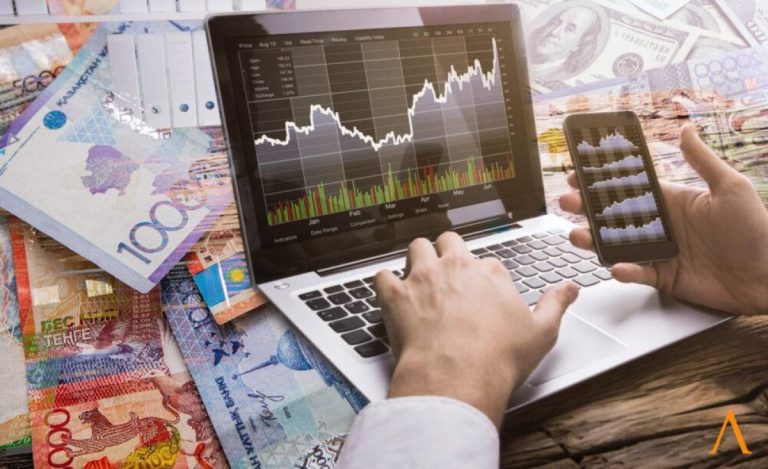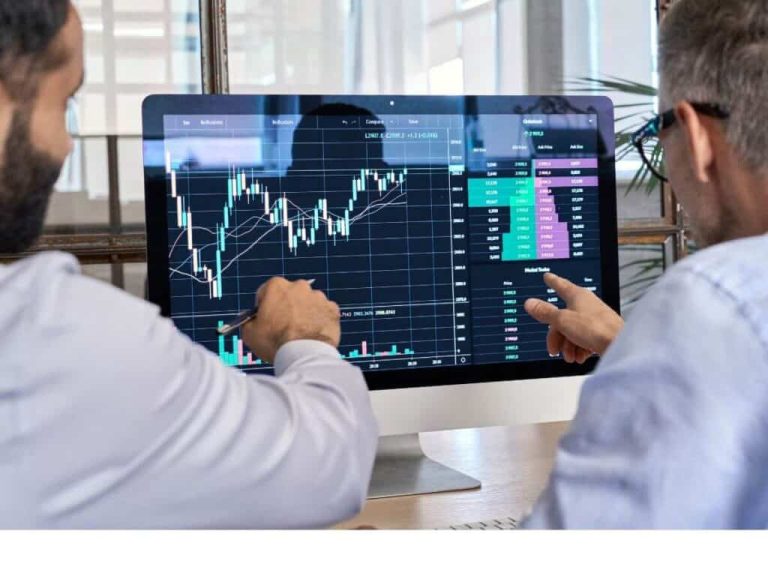Understanding Bitcoin Mining Basics
What is Bitcoin Mining?
Bitcoin mining is the process by which new bitcoins are created and transactions are verified and added to the public ledger known as the blockchain. To put it simply, mining is essential to the Bitcoin network as it serves multiple pivotal roles: ensuring the security of the network and making it decentralized. Various miners across the world use powerful computers to solve complex mathematical equations. In doing so, they validate batches of transactions—known as blocks—and secure the network against fraud and double-spending.
Every time a miner successfully solves a problem, a new block is added to the blockchain, and the miner is rewarded with newly minted bitcoins along with transaction fees from the transactions included in the block. This process not only helps to introduce new bitcoin into circulation but also ensures that all transactions are reliable and verified. If you’re keen to dive deeper into the mechanics of Bitcoin mining, understanding the foundational elements of this process is critical for anyone interested in cryptocurrency.
How Does Bitcoin Mining Work?
At its core, Bitcoin mining employs the proof-of-work consensus mechanism. This means that miners compete to find a hash (a unique string of numbers and letters) that represents a block of transactions. The first miner to discover the correct hash is allowed to add the new block to the blockchain, which requires a significant amount of computational power and energy. The complexity of this process ensures that new blocks are added roughly every 10 minutes.
The mining process begins with miners collecting new transactions that have been broadcast to the Bitcoin network. Miners aggregate these transactions into a candidate block and begin the mining process by creating a hash of the block header that includes the previous block’s hash, a timestamp, and a nonce (a randomly chosen number). Miners must repeatedly change the nonce until they produce a hash that meets Bitcoin’s difficulty target, a value adjusted every 2016 blocks to ensure that blocks remain added at a steady rate.
The Importance of Mining in the Bitcoin Network
The significance of mining cannot be overstated. It plays a crucial role in maintaining the integrity and functionality of the Bitcoin network. By solving cryptographic puzzles, miners secure the network against attacks, as altering any single block would require redoing the work for that block and all subsequent blocks—a near-impossible task due to the immense computational effort required. This characteristic lends Bitcoin its impressive security.
Moreover, through the process of mining, Bitcoin achieves its decentralized nature. Rather than being controlled by a central authority, transactions are verified by miners distributed across the globe, fortifying the network against censorship or manipulation. Lastly, mining contributes to the issuance of new bitcoins into circulation, fundamentally tying miners’ reward systems to the validation of transactions and the creation of a stable monetary system based on supply and demand dynamics.
Getting Started with Bitcoin Mining
Choosing the Right Equipment for Bitcoin Mining
When entering the world of Bitcoin mining, selecting the right hardware is one of the most crucial decisions you’ll make. The most common equipment used in Bitcoin mining includes ASIC miners (Application-Specific Integrated Circuits), which are specifically designed for the task and offer the best hash rates while consuming less energy than traditional GPU (Graphics Processing Unit) setups.
Some popular ASIC miners include the Antminer series from Bitmain and the Whatsminer series from MicroBT. These machines can cost several hundred to thousands of dollars, depending on their performance levels. When choosing equipment, consider factors such as hash rate, power efficiency, and initial cost—essentially, you want equipment that maximizes your potential profits while minimizing operational costs.
Setting Up Your Mining Operation
Setting up your mining operation involves not just choosing the right hardware, but also configuring your space for optimal performance. Key elements include ensuring adequate ventilation, managing noise (due to high-powered fans), and selecting the right location to reduce electricity costs. Depending on your hardware, you may also need specific power supplies to handle the electricity demands.
Moreover, effective management of your network infrastructure is vital. A stable and high-speed internet connection with low latency will ensure that you maintain a competitive edge over other miners. Since mining requires a series of constant data transmissions, any interruption can result in lost opportunities and potential earnings.
Understanding Mining Pools vs. Solo Mining
When it comes to mining strategy, you have two main paths: solo mining or joining a mining pool. Solo mining involves you mining on your own, which allows you to keep all the rewards for yourself when you successfully mine a block. However, the competition is immense, and the chances of solving a block on your own are small, especially with the increased difficulty levels today.
In contrast, mining pools allow multiple miners to share their processing power, leading to a greater combined chance of solving a block. Once a block is successfully mined, the rewards are distributed according to each participant’s contribution to the hashing power. Joining a pool can provide a more consistent income stream but comes with a fee charged by the pool operator and a reduced reward.
Maximizing Your Mining Profitability
Electricity Costs and Efficiency
Electricity costs significantly impact the profitability of your Bitcoin mining operation. To maximize profitability, understanding and minimizing these costs should be a top priority. Efficient energy use can be achieved through several methods, such as using energy-efficient mining equipment, optimizing your mining setup for power consumption, and potentially sourcing energy from cheaper or renewable options.
Additionally, many miners monitor their energy rates closely, often relocating their operations to areas with lower electricity costs, such as regions with surplus hydroelectric power or incentives for renewable energy use. Tracking performance metrics over time, such as the cost per kilowatt-hour in relation to your mining output, can help you make informed decisions about operational adjustments.
Keeping Up with Market Trends
The cryptocurrency landscape is ever-evolving, making it essential for miners to adapt to market trends and changes in technology. Being aware of price fluctuations, regulatory developments, and new mining technologies can help you leverage opportunities and make timely adjustments to your mining strategy.
For instance, periodic upgrades to hardware can significantly enhance your efficiency and output, ensuring you stay competitive amid shifting market dynamics. Furthermore, market analytics tools can assist you in understanding broader trends and assist in decision-making processes.
Evaluating Mining Software Options
In addition to selecting hardware, choosing the right mining software is crucial to optimizing your operation. There are various mining software solutions available, ranging from basic to advanced, and the right choice largely depends on your level of expertise and operational needs. Popular options include CGMiner, BFGMiner, and EasyMiner, which cater to different types of miners, from novices to experts.
These software solutions enable miners to connect their hardware to the Bitcoin network, manage mining pools, and access real-time performance stats. Additionally, users can control various mining parameters and customize settings such as overclocking, temperature regulation, and power efficiency management.
Advanced Bitcoin Mining Techniques
Cloud Mining Explained
Cloud mining is an alternative to traditional on-site mining, allowing individuals to mine bitcoins without needing hardware or electricity costs. Instead, users rent hardware from a cloud mining provider, who takes care of the logistics, maintenance, and setup. This model can appeal to beginners or those who lack the technical expertise to manage their own rig.
However, cloud mining comes with its challenges and risks. Ensuring that you engage with reputable providers is crucial, as some companies may engage in fraudulent activities or fail to deliver on their promised payouts. Proper research, including reading reviews and understanding contract terms, can help mitigate these risks.
Optimizing Your Mining Rig Performance
Maximizing the performance of your mining rig can lead to increased profitability and efficiency. Strategies can include enhancing cooling systems to prevent overheating, optimizing computer settings for better performance, and conducting regular maintenance to ensure your equipment runs smoothly. Additionally, mining at the right times can help avoid high energy rates, thereby enhancing your bottom line.
Moreover, equipment upgrades can play a pivotal role in improving performance. Staying updated on the latest hardware advancements can provide insights into when it may be time to invest in new technology to maintain or increase your competitive edge in the market.
The Role of Renewable Energy in Mining
The conversation surrounding Bitcoin mining has increasingly included discussions about sustainability and energy consumption. As the mining industry grows, more miners are turning to renewable energy sources to power their operations. Renewables such as solar, wind, and hydroelectric energy can provide significant cost savings while also addressing environmental concerns surrounding fossil fuels.
Investing in renewable infrastructure can not only help reduce overhead costs but also contribute to a cleaner planet. Furthermore, miners utilizing green energy can sometimes benefit from financial incentives, rebates, or programs that promote sustainable energy practices, solidifying a beneficial relationship between Bitcoin mining and renewable energy development.
Staying Compliant and Secure in Bitcoin Mining
Legal Considerations for Miners
As Bitcoin mining continues gaining traction, it also comes under scrutiny from regulatory authorities in various jurisdictions. It’s crucial for miners to stay informed about the legal landscape regarding cryptocurrency, including taxation laws and compliance requirements. Different countries have varying regulations regarding mining and cryptocurrency trading which can affect miner operations significantly.
Understanding these laws and compliance requirements is essential for avoiding potential fines or shutdowns. Consulting with legal experts familiar with cryptocurrency regulations can provide peace of mind and ensure that you are operating within the bounds of the law.
Protecting Your Mining Operations from Cyber Threats
Cybersecurity is an ongoing concern in the cryptocurrency space, and miners are often targeted due to the valuable assets and sensitive information they handle. Effective cybersecurity measures are essential to protecting your mining operation. Implementing firewalls, antivirus software, and 2FA (Two-Factor Authentication) can help protect your assets.
Additionally, educating yourself and your team about common cyber threats, such as phishing attacks or malware, can further help mitigate risks. Regular audits of your operational security measures can ensure that vulnerabilities are continually addressed.
Future Trends in Bitcoin Mining Regulation
As the blockchain ecosystem continues to mature, the mining industry is likely to see further regulatory scrutiny and evolution. With the increasing focus on sustainability and ethical mining practices, future regulations may prioritize environmentally friendly practices. Additionally, governments may implement stricter compliance measures to curb illicit activities associated with mining operations.
Staying ahead of emerging regulatory trends will be essential for miners aiming to maintain compliance and ensure the longevity of their operations. Engaging with industry associations or advocacy groups can provide resources and support for navigating future regulatory landscapes effectively.















+ There are no comments
Add yours